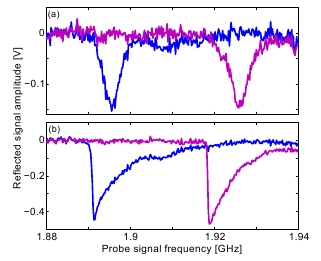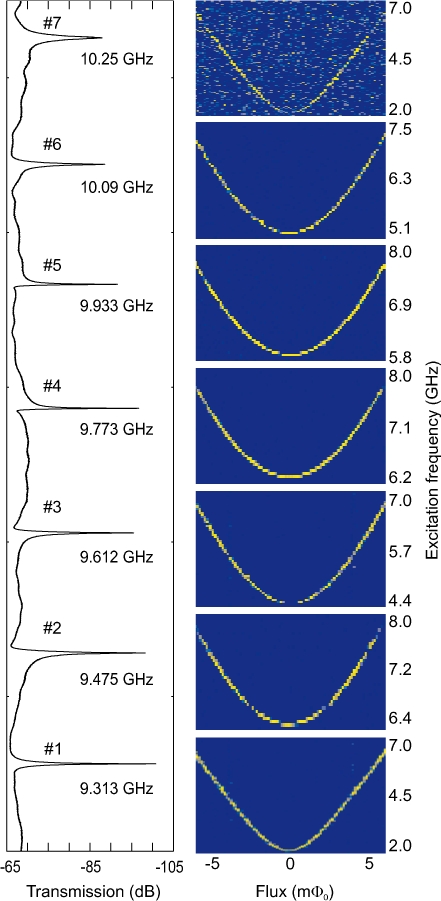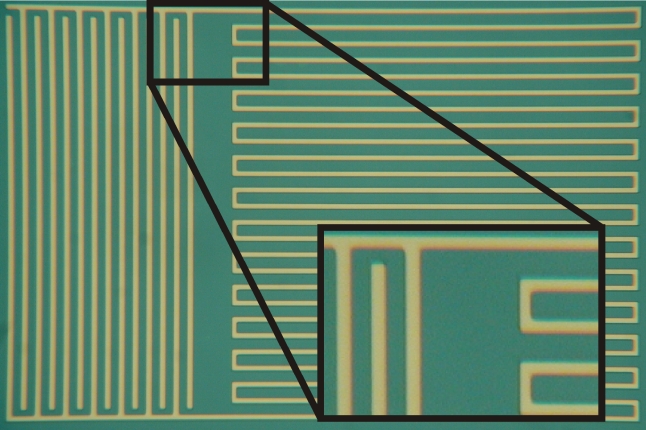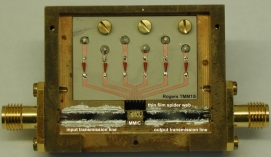B3.4: Control of Quantum Information Circuits
Subproject Leader:
Michael Siegel
Institut für Mikro- und Nanoelektronische Syteme, KIT
Alexey Ustinov
Physikalisches Institut, KIT
Contributing Scientists:
Present: Dagmar Rall, Markus Jerger
Past: Stefan Wünsch, Kirill Fedorov, Tobias Wirth
The future of information processing
Quantum computation is expected to be the next big leap forward in information processing. A number of problems that are computationally infeasible on classical computers, requiring factorial time, can be solved in polynomial time on quantum computers. This tremendous speedup results from a clever use of the superposition principle of quantum mechanics.
Circuits with many qubits
In the simplest method, to determine the state of superconducting qubits at the end of a computation, one measures the switching current of a SQUID coupled to the qubit. This readout system introduces unwanted heat to the qubit and usually cannot be done fast. Besides that, it requires SQUID with individual measurement wires for every qubit. To lift the first limitation, we developed the microwave readout for phase qubits through a SQUID resonator, which does not require switching [1] and allowed us to increase the measurement rate by a factor of 20. The second problem of having too many wires can be elegantly solved by coupling qubits to individual readout resonators (pixels) having distinct resonance frequencies are all connected to the same microwave line. By sending probe signals with several frequency components through the line, we can determine the state of all connected qubits simultaneously [2]. This technique is commonly referred to as frequency-division multiplexing.
Optimization of multi-pixel detectors
While the operating principle of a frequency-division multiplexing detector system is straightforward, the actual implementation of such detectors is challenging. As the detection bandwidth is always limited, the frequencies of the individual resonators should be as close as possible, but still separable. We studied different footprints, coupling and feed-line geometries of lumped element kinetic inductance detectors to eliminate parasitic effects that limit the achievable quality factors and complicate the prediction of the exact resonance frequencies [3]. Unloaded quality factors of more than 10,000 were realized at 4.2 K.
Wideband cryogenic readout amplifiers
Readout of quantum circuits requires measuring extremely low-powered signals. In the case of a qubit, any measurement disturbs its quantum state, with the rate of disturbance being proportional to the amplitude of the probe signal. To introduce less noise and as little back action as possible, cryogenic low-noise amplifiers need to be used. The challenge here is to combine low power consumption, high gain, large bandwidth, and low noise at 4.2 K. Commercially available amplifiers so far cannot combine all these requirements. We developed custom-made cryogenic broad band amplifiers with state-of-the-art performance using monolithic microwave integrated circuit (MMIC) technology [4].
References
| [1] | T. Wirth, J. Lisenfeld, A. Lukashenko, and A. V. Ustinov, Microwave readout scheme for a josephson phase qubit, Appl. Phys. Lett. 97, 262508 (2010) |
| [2] | M. Jerger, S. Poletto, P. Macha, U. Hübner, A. Lukashenko, E. Il'ichev, and A. V. Ustinov, Readout of a qubit array via a single transmission line, arXiv:1102.0404, to appear in Europhys. Lett. (2011) |
| [3] | S. Wünsch, G. Hammer, T. Kappler, F. Geuppert, and M. Siegel, Investigation and optimization of LEKID coupling structures and multi-pixel arrays at 4.2 K, IEEE Trans. Appl. Supercond. 21, 752 (2011) |
| [4] | S. Wünsch, D. Bruch, E. Crocoll, A. Leuther, I. Kallfass, and M. Siegel, Development of monolithic microwave integrated amplifiers as readout for detectors at 4.2 K, IEEE Trans. Appl. Supercond. 21, 302 (2011) |
List of Publications 2006-2011 as PDF
Subproject Report 2006-2010 as PDF



